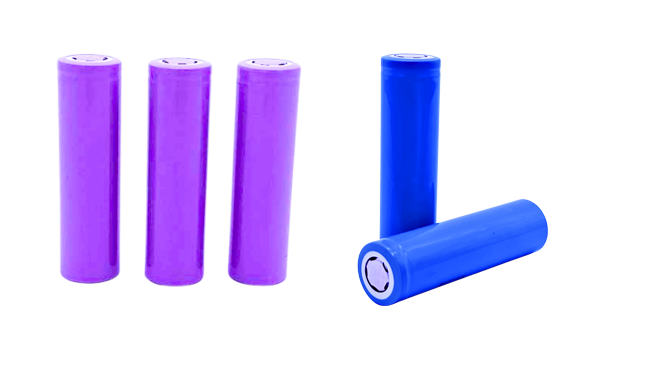Key processes and equipment for the production of 26650 lithium battery cells.
Mixing (positive and negative active materials+conductive agent+binder+dispersant) - coating - rolling - slitting - electrode ear welding - winding (or gasket) - adhesive tape - entering the battery cell shell - welding - sealing - chemical transformation, etc; The battery production process in the entire industry is basically the same, with the main difference being the difference in equipment or battery products, such as soft pack stacking, cylindrical winding, square winding, and stacking coexisting; Causing the battery cells to be different during the winding process; The most important and core technologies are mixing and coating, as well as final formation;

The production process of lithium batteries is relatively complex, mainly including the stirring and coating stage of electrode production (front stage), the winding and liquid injection stage of cell synthesis (middle stage), and the packaging and testing stage of chemical packaging (rear stage). The value (purchase amount) accounts for about (35-40%): (30-35)%: (30-35)%. According to Coating Online, the differences mainly come from different equipment suppliers, differences in import/domestic ratios, etc. The process flow is basically the same, and there is a deviation in the value to quantity ratio, but overall it conforms to this ratio.
The lithium battery equipment corresponding to the front-end process of lithium battery production mainly includes vacuum mixers, coating machines, roller presses, etc; The intermediate process mainly includes die-cutting machine, winding machine, laminating machine, liquid injection machine, etc; The later stages of the process include chemical conversion machines, volumetric testing equipment, process warehousing and logistics automation, etc. In addition, the production of battery packs also requires Pack automation equipment.
The result of the front-end process of lithium batteries is the completion of the preparation of the positive and negative electrode sheets. The first step is stirring, which involves mixing the solid battery materials of the positive and negative electrodes evenly, adding a solvent, and stirring them into a slurry using a vacuum mixer. The mixing of ingredients is the foundation of the subsequent process of lithium batteries, and high-quality mixing is the basis for the high-quality completion of subsequent coating and rolling processes.
After the coating and rolling process, it is cut, that is, the coating is subjected to a cutting process. If burrs are generated during the cutting process, safety hazards may arise during subsequent assembly, electrolyte injection, and even battery use. Therefore, the front-end equipment in the lithium battery production process, such as mixers, coating machines, roller presses, slitting machines, etc., are the core machines of battery manufacturing, which are related to the quality of the entire production line. Therefore, the value (amount) of front-end equipment accounts for the highest proportion of the entire lithium battery automation production line, about 35%.
In the manufacturing process of lithium batteries, the intermediate process mainly involves the formation of the battery, including sheet making, pole piece winding, die-cutting, cell winding and forming, and laminated forming. It is currently a fiercely competitive field among domestic equipment manufacturers, accounting for about 30% of the value of lithium battery production lines.
At present, there are two main manufacturing processes for power lithium batteries: winding and stacking. The corresponding battery structure forms are mainly cylindrical and square, and soft pack. Cylindrical and square batteries are mainly produced by winding process, while soft pack batteries are mainly produced by stacking process. Cylinders are mainly represented by 18650 and 26650 (Tesla has independently developed 21700 batteries and is promoting them throughout the industry). The difference between square and soft packaging is that the outer shell is made of hard aluminum shell and aluminum-plastic film, respectively. The soft packaging is mainly made of laminated technology, while the aluminum shell is mainly made of winding technology.
It is understood that the soft pack structure is mainly aimed at the mid to high end digital market, with a high profit margin per unit product. Under the same production capacity conditions, the relative profit is higher than that of aluminum shell batteries. Due to the easy formation of economies of scale in aluminum shell batteries, the product qualification rate and cost are easy to control. Currently, both have considerable profits in their respective market fields, and it is difficult for them to be completely replaced in the foreseeable future.
Due to the fact that the winding process can achieve high-speed production of battery cells through rotational speed, while the speed that can be improved by laminating technology is limited, the current domestic power
lithium battery mainly adopts the winding process. Therefore, the shipment volume of winding machines is currently greater than that of laminating machines.
The corresponding preceding processes for winding and laminating production are the production of polarizer sheets and die cutting. Production includes welding the segmented pole pieces/pole ears, removing dust from the pole pieces, applying protective tape, wrapping the pole ears with glue, and winding or fixed length cutting. The wound pole pieces are used for subsequent fully automatic winding, while the fixed length cutting pole pieces are used for subsequent semi-automatic winding; Punching and cutting pole pieces are formed by winding and punching the segmented pole pieces, which are used for subsequent laminating processes. drain
